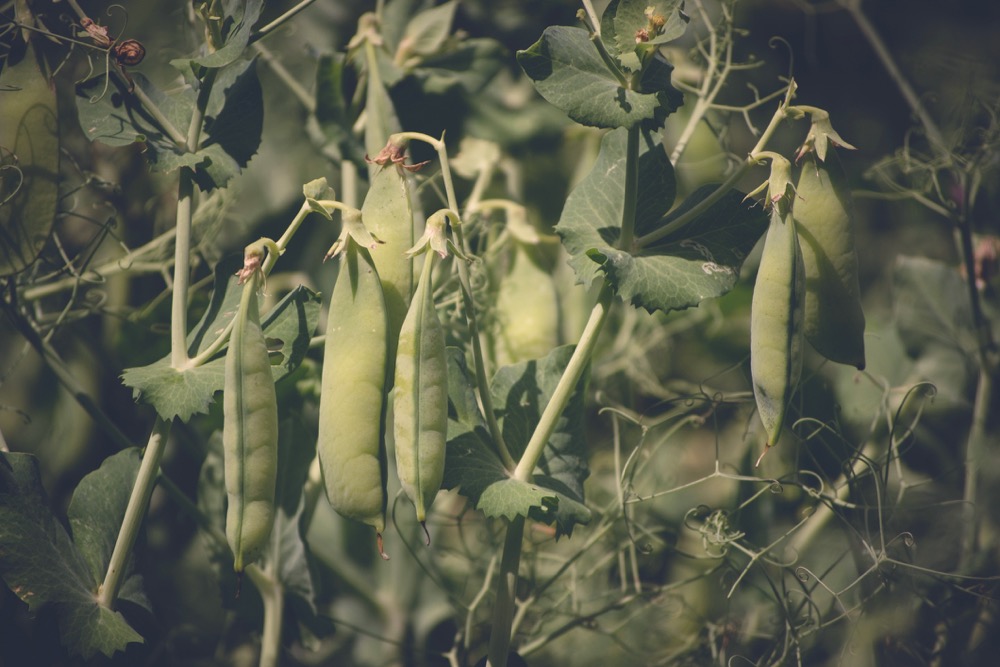Values for durum are up in the Canadian Wheat Board’s latest pool return outlooks (PROs) for both the 2008-09 and 2009-10 crop years, but not high enough to make up for what its most vocal critic calls “restrictive” delivery opportunities.
The CWB, in its May PROs released Thursday, noted global durum production is expected to be slightly higher than last year overall, with “significantly larger” production in North Africa than in 2008-09, offset by an expected smaller crop from Europe.
Read Also

Pulse Weekly: Yields coming into focus
Provincial agricultural departments are reporting pulse yields higher than Statistics Canada’s September estimates.
Late seeding in the U.S. durum-growing region and dryness in Western Canada are causing concerns about the production and quality outlook for durum in North America, the CWB said in its 2009-10 durum outlook.
As well, the CWB said, a strong Euro has helped boost demand for durum in the European Union (EU).
Durum demand has generally shown “some strength” in recent weeks, the CWB said in its 2008-09 outlook, with buyers extending coverage levels forward to hedge their position against “possible deterioration” of durum crops in Europe and North America alike.
A rapidly appreciating Canadian dollar, however, has offset stronger durum prices, the CWB said.
“Lower returns”
Milling durum values are up $9 per tonne in the May 2009-10 PROs compared to April levels. No. 1 Canada western amber durum (CWAD), 14.5 per cent protein, for example, sits at $305 per tonne, up from $296 in April. No. 2 CWAD (13.0) sits at $285 per tonne, up from $276. Feed-grade No. 5 CWAD is up $2 at $194.
The May 2008-09 milling durum PROs, meanwhile, show increases of $5 to $6 per tonne. No. 1 CWAD (14.5) sits at $378 per tonne, up $6, while No. 2 CWAD (13.0) is at $349, up $5. No. 5 CWAD is down $4 at $192.
Looking at Thursday’s numbers, the Western Canadian Wheat Growers Association (WCWGA) sees the PRO for No. 1 CWAD (13.0) at $8.51 per bushel, basis Alberta, which it said is “more than a dollar per bushel, or 12 per cent, below comparable U.S. prices.”
“The elevator price in the ‘Golden Triangle’ region of Montana has averaged C$9.71 per bushel thus far in the current crop year,” the WCWGA said in a release Thursday.
“Not only are we forced to accept lower returns but we aren’t even allowed to deliver all our durum,” said Stephen Vandervalk, a farmer at Fort Macleod, Alta. and the association’s Alberta vice-president, in the release.
In the current crop year, the association said, the CWB has accepted 74 per cent of the tonnage amount contracted by durum grower and “has indicated that it does not intend to make any further durum contract calls for the remainder of the crop year, ending July 31.”
Prairie farmers will thus be required to carry over their milling durum into the next crop year or sell it into the feed market, the WCWGA said. Carrying over durum stocks means extra storage costs, and that farmers will have to wait until December 2010 to get paid in full for their 2008 durum, the group added.
Wheat up, and down
International wheat prices have moved higher, the CWB said in its 2009-10 outlook, although they’ve moved at a slower pace than U.S. values, supported by a declining U.S. dollar. World wheat fundamentals are “still not very positive,” the CWB said, due mostly to large stocks remaining from the 2008-09 crop.
Large stocks from 2008-09 also factored into the U.S. Department of Agriculture’s increased forecasts for ending stocks, up 9.2 per cent, the CWB said.
Seeding problems in U.S. spring wheat and corn areas, combined with continued concerns over U.S. winter wheat production, provided some “fundamental support” for the market, as did a rally in U.S. soybeans, the board said Thursday. The rising loonie, however, has offset much of those gains.
The 2009-10 PROs for milling wheat show most values up $2 per tonne from April levels, including No. 1 Canada western red spring (CWRS), 14.5 per cent protein, at $298. No. 3 CWRS sits at $251, also up $2. No. 1 CPSR and CPSW wheats are both flat at $244 per tonne, while No. 1 CWSWS sits at $219, down $8 per tonne.
Milling wheat PROs for May 2008-09 range from unchanged to down $2 per tonne, with No. 1 CWRS (14.5) down $2 at $324, No. 3 CWRS flat at $266, No. 1 CPSR and CPSW flat at $259 and No. 1 CWSWS down $1 at $227 per tonne. CW Feed wheat dropped $4 to $192 per tonne.
Malt barleys down
Spring barley prospects are still “largely favourable” in the EU, “timely rains” in South Australia have boosted production prospects there, and the stronger loonie has also weighed on prices, the CWB said.
But late seeding and fewer acres expected in the U.S. and Canada will provide some support for the malting market, the CWB added in its 2009-10 outlook Thursday. Demand for malting-quality barley is also expected to be up slightly from 2008-09 levels.
Also, the CWB noted in its 2008-09 outlook, abundant old-crop stocks of mating barley have held their quality and are being carried forward, putting pressure on the new-crop price structure.
However, “at this stage in the (2008-09) marketing year, the old-crop pool sales are nearly complete and the impact of market price declines on the old-crop PRO is moderate,” the board said.
The CWB’s PROs for 2009-10 malting barley show Select CW two-row and six-row both down $4 from April levels at $244 and $224 respectively. The new 2008-09 PROs show malting barley down $3 per tonne from April levels at $317 and $297 respectively.
Feed barley
Global barley production is forecast to drop about three per cent from 2008-09 levels, but is expected to remain above the five-year average, the CWB said in its 2009-10 outlook for feed barley Thursday.
Barley production in Canada, the EU and the Black Sea region is forecast to decrease, while production in Australia, the Middle East and Africa will increase, reducing feed barley demand. Uncertainties about the U.S. corn crop, however, have “added support” to U.S. and international feed markets.
And the rising loonie, meanwhile, has “largely offset” any improvements in feed barley prices as well, the CWB said.
In the 2009-10 PRO, No. 1 CW feed barley (Pool A) rose $2 from April levels, to $158 per tonne, while in the 2008-09 PRO, No. 1 CW (Pool B) dropped $3 per tonne, to $163.
The next 2008-09 PRO is expected to be released July 23, the CWB said; the next 2009-10 PRO, June 25.















